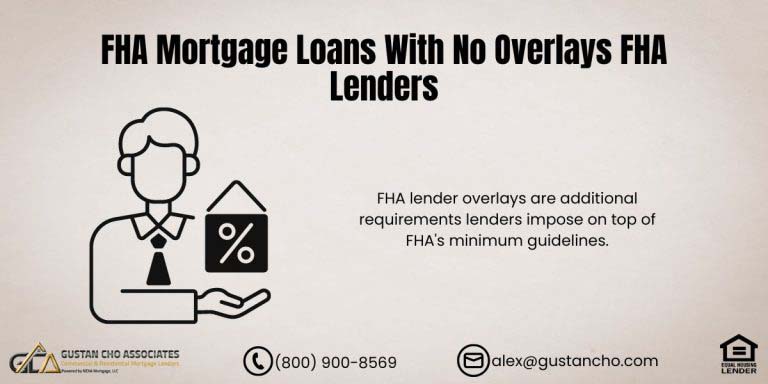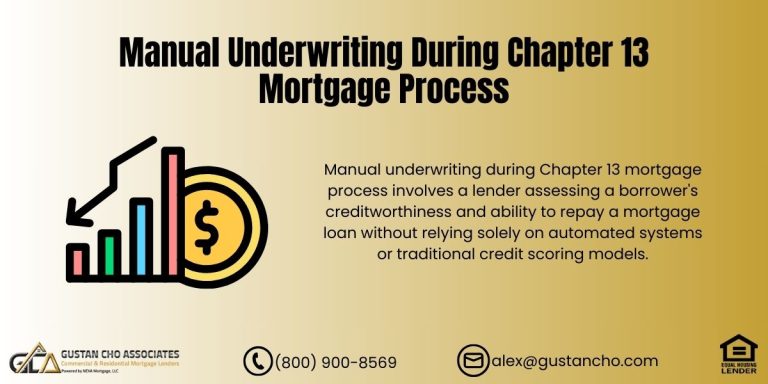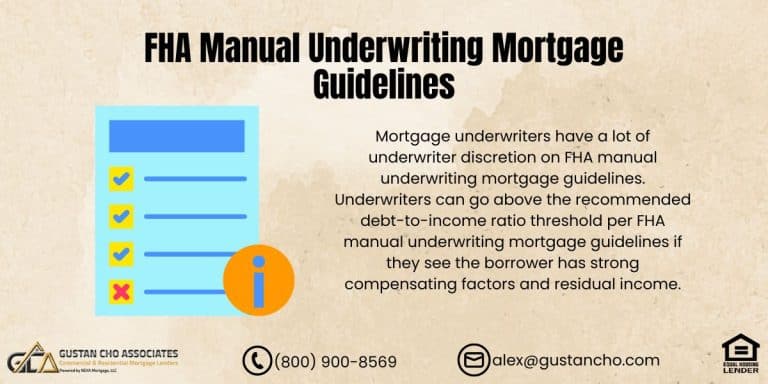This blog will discuss and cover Fannie Mae-Freddie Mac Exempt Debt Guidelines on Conventional Loans. When calculating the debt-to-income (DTI) ratio, lenders will exempt certain monthly debts. Sometimes, mortgage borrowers have debts reported on their credit report that are being paid by others.
The Exempt Debt Guidelines allow any installment debts paid by a family member and/or relative to be excluded from DTI calculations. The debt can only be paid if the individual making the payment is named a co-borrower, as per the policies of most lenders. They may require the person paying the debt to be a joint borrower. The person making the payment on the debt is not required to be listed as a co-borrower or joint borrower, according to the Exempt Debt Guidelines.
Is Fannie Mae and Freddie Mac a Conventional Loan?
Fannie Mae and Freddie Mac offer conventional loans that are not backed or secured by the federal government. These loans generally follow the underwriting standards established by these two organizations and are known as conforming loans. The term “conforming” indicates that these loans meet the specific standards Fannie Mae and Freddie Mac set. Additionally, they adhere to the Fannie Mae-Freddie Mac Exempt Debt Guidelines, which outline the types of debt that can be excluded from the borrower’s debt-to-income ratio calculations.
Here are a few key points about conventional loans associated with Fannie Mae and Freddie Mac:
- Loan Limits: Maximum loan limits are established and may differ depending on the location, with annual adjustments. Loans that go beyond these limits are termed jumbo loans.
- Credit Requirements: Borrowers typically need a good credit score to qualify, often a minimum of 620.
- Down Payment: They generally require a down payment, typically around 3-20% of the home’s purchase price.
- Mortgage Insurance: When the down payment is below 20%, private mortgage insurance (PMI) is generally necessary.
- Flexibility: These loans offer a variety of term lengths and interest rate options, including fixed-rate and adjustable-rate mortgages.
Conventional loans are popular for many homebuyers due to their flexibility and favorable terms for those with good credit and stable income.
Looking to Qualify for a Conventional Loan? Learn About Exempt Debt Guidelines!
Contact us today to understand how these exemptions can help you qualify for a conventional loan.
Fannie-Mae-Freddie Mac Exempt Debt Guidelines Versus Lender Overlays
Most lenders impose lender overlays regarding debts paid by others. These overlays are additional mortgage guidelines that exceed the minimum requirements set by Fannie Mae and Freddie Mac. While lenders must comply with these basic guidelines, they often establish higher underwriting standards. Gustan Cho Associates, however, does not impose any overlays on Fannie Mae-Freddie Mac Exempt Debt Guidelines.
What Debts Are Exempt From Debt to Income Ratio Calculations
Most lenders will only comply with the Fannie Mae-Freddie Mac Exempt Debt Guidelines if the person responsible for the debt is named a co-borrower and/or joint account holder. Nevertheless, Gustan Cho Associates, a mortgage company licensed in multiple states with no lender restrictions on government and conventional loans, does adhere to these Fannie Mae-Freddie Mac Exempt Debt Guidelines. Gustan Cho Associates will exempt the borrower’s monthly debt payment if another person pays the actual debt. The person paying the debt does not need to be on the loan.
Fannie Mae-Freddie Mac DTI Guidelines On Conventional Loans
Under the Fannie Mae-Freddie Mac Exempt Debt Guidelines, conventional loans‘ maximum debt-to-income (DTI) ratio is 50%, with no front-end DTI requirement. In comparison, the Department of Housing and Urban Development (HUD), which oversees FHA loans, allows for a 46.9% front-end and 56.9% back-end DTI ratio.
Borrowers might opt for conventional rather than FHA loans because of varying qualification criteria. One significant benefit of conventional loans is how they address student loan payments. Conventional loans allow income-based repayment (IBR) student loan plans to be used, which can significantly lower the calculated DTI. Recently, HUD updated its guidelines to allow IBR plans for FHA loans. Before this change, HUD required the use of either 1.0% of the outstanding student loan balance as a hypothetical debt or the provision of a fully amortized monthly payment from the student loan provider over an extended term.
These Fannie Mae-Freddie Mac Exempt Debt Guidelines provide flexibility for borrowers with student loans, making it easier for them to qualify for a conventional mortgage.
DTI Calculations on Student Loans
The hypothetical monthly payment over the extended term can be used in lieu of 0.50% of the outstanding loan amount if that amount is lower than the IBR payment and vice versa. The hypothetical monthly payment over the extended term can be lower than the IBR payment of the outstanding loan amount if the borrower has higher income. Not all lenders will take the hypothetical monthly payment over the extended term. Large outstanding student loans are one of the biggest barriers in homebuyers qualifying for a mortgage.
Fannie Mae-Freddie Mac Exempt Debt Guidelines
Gustan Cho Associates has no overlays on Fannie-Mae-Freddie Mac Exempt Debt Guidelines. Here is how Fannie-Mae-Freddie Mac Exempt Debt Guidelines works:
- The borrower with monthly debt on the credit report can have that debt exempt if someone else is paying for it
- The debt can be exempt only if the borrower can provide 12 months of canceled checks and/or bank statements from the person making it
- Many borrowers have their parents pay for their student loans and auto loans
As long as their parents can provide the borrower with the past 12 months of timely payments on their student loans and/or car payments, that debt is exempt from DTI Calculations.
Want to Improve Your Loan Eligibility? Explore Exempt Debt Guidelines!
Reach out now to learn how these exemptions can benefit your loan application.
Does Fannie Mae Allow Paying Down Debt to Qualify?
Yes, Fannie Mae does allow borrowers to pay down debt to qualify for a mortgage. This strategy is known as “paying down debt to qualify.” It can help improve the borrower’s debt-to-income (DTI) ratio, a crucial factor in mortgage underwriting. Here are some key points about this process:
Paying Down Debt to Qualify
- Debt-to-Income Ratio (DTI)
- The DTI ratio represents the portion of a borrower’s gross monthly income used for debt repayment. Decreasing this ratio can help borrowers satisfy Fannie Mae’s criteria.
- Fannie Mae typically requires a maximum DTI ratio of 45%, though higher ratios may be considered with strong compensating factors.
- Eligible Debt Payments
- One can settle or reduce debts like credit card debt, personal loans, car loans, and student loans to lower their DTI ratio.
- Documentation Requirements
- Lenders will require documentation to verify that the debts have been paid or reduced. This typically includes:
- Proof of payment (e.g., receipts, bank statements)
- Updated account statements showing the new balances or zero balances
- A letter of explanation detailing the debt repayment plan
- Lenders will require documentation to verify that the debts have been paid or reduced. This typically includes:
- Timing of Payments
- The debt must be paid down before the mortgage loan application is finalized. The lender must then reevaluate the borrower’s financial situation using the updated DTI ratio.
- Cash Reserves
- Paying down debt may impact the borrower’s cash reserves. Lenders typically want borrowers to have sufficient reserves to cover mortgage payments and other expenses after closing.
Example Scenario
Suppose a borrower has a gross monthly income of $5,000 and monthly debts of $2,500, resulting in a 50% DTI ratio. To meet Fannie Mae’s 45% DTI ratio requirement, the borrower pays off a $500 monthly car loan. This action reduces the monthly debts to $2,000, lowering the DTI ratio to 40% ($2,000 / $5,000), which now meets the guideline.
Considerations
- Credit Score Impact: Paying down debt can also improve the borrower’s credit score, potentially leading to better mortgage terms.
- Lender Policies: While Fannie Mae permits this practice, individual lenders may have their own guidelines or additional requirements.
Paying down debt to qualify for a Fannie Mae mortgage can effectively improve eligibility and secure better loan terms. Borrowers should work closely with their lenders to meet all necessary documentation and timing requirements.
Qualifying For Mortgage With Direct Lender With No Overlays
Homebuyers who need to qualify for a mortgage with a lender with no overlays, please contact us at Gustan Cho Associates at 800-900-8569 or text us for a faster response. Or email us at gcho@gustancho.com. We have zero overlays on government-backed and conventional loans. The Team at Gustan Cho Associates is available 7 days a week, evenings, weekends, and holidays.
FAQs: Fannie Mae-Freddie Mac Exempt Debt Guidelines On Conventional Loans
- 1. What are the Fannie Mae-Freddie Mac Exempt Debt Guidelines? The Fannie Mae-Freddie Mac Exempt Debt Guidelines allow certain monthly debts to be excluded from the debt-to-income (DTI) ratio calculations if they are paid by someone other than the borrower. These guidelines are particularly beneficial for borrowers who have debts reported on their credit report but are paid by family members or relatives.
- 2. How do the Fannie Mae-Freddie Mac Exempt Debt Guidelines work? According to these guidelines, installment debts paid by a family member or relative can be excluded from the DTI calculations. The debt can only be excluded if the individual making the payment is a co-borrower or joint account holder. However, some lenders may require the person paying the debt to be a joint borrower.
- 3. What types of loans do Fannie Mae and Freddie Mac offer? Fannie Mae and Freddie Mac offer conventional loans that are not backed or secured by the federal government. The loans, referred to as conforming loans, adhere to the particular standards established by Fannie Mae and Freddie Mac and comply with their underwriting guidelines.
- 4. What are the key points about conventional loans associated with Fannie Mae and Freddie Mac? Conventional loans from Fannie Mae and Freddie Mac have varying loan limits based on location, with credit score requirements of at least 620. Down payments range from 3% to 20%, and private mortgage insurance is required if the down payment is below 20%. These loans provide options for both duration and interest rates, offering flexibility to borrowers.
- 5. How do the Fannie Mae-Freddie Mac Exempt Debt Guidelines compare to lender overlays? Most lenders impose additional guidelines, known as lender overlays, which go beyond the minimum requirements set by Fannie Mae and Freddie Mac. These overlays often include stricter standards for debts paid by others. Gustan Cho Associates, however, does not impose any overlays on these guidelines and adheres strictly to the Fannie Mae-Freddie Mac Exempt Debt Guidelines.
- 6. What debts are exempt from DTI ratio calculations? Under the Fannie Mae-Freddie Mac Exempt Debt Guidelines, debts can be exempt from DTI calculations if another person, such as a family member, is making the payments. To qualify for this exemption, the borrower must provide 12 months of canceled checks or bank statements from the person making the payments.
- 7. Does Fannie Mae allow paying down debt to qualify for a mortgage? Yes, Fannie Mae allows borrowers to pay down debt to improve their DTI ratio, a crucial factor in mortgage underwriting. This strategy can help borrowers meet Fannie Mae’s requirements and secure better loan terms.
- 8. What documentation is required to qualify when paying down debt? When paying down debt to qualify, lenders will need several documents. These include proof of payment, such as receipts, bank statements, and updated account statements that reflect the new or zero balances. Additionally, a letter of explanation outlining the debt repayment plan is necessary.
- 9. What are the DTI guidelines for conventional loans under Fannie Mae-Freddie Mac? The maximum DTI ratio for conventional loans is 50%, and there is no front-end DTI requirement. In contrast, FHA loans have a maximum front-end DTI of 46.9% and a back-end DTI of 56.9%.
- 10. How do Fannie Mae-Freddie Mac Exempt Debt Guidelines impact student loan repayments? Conventional loans allow income-based repayment (IBR) student loan plans, which can significantly lower the calculated DTI. Recently, HUD updated its guidelines to allow IBR plans for FHA loans, providing more flexibility for borrowers with student loans.
- 11. How can I qualify for a mortgage with no lender overlays? To qualify for a mortgage with no lender overlays, contact Gustan Cho Associates at 800-900-8569 or email gcho@gustancho.com. They have zero overlays on government-backed and conventional loans. They are available seven days a week, including evenings, weekends, and holidays.
This blog about Fannie Mae-Freddie Mac Exempt Debt Guidelines On Conventional Loans was updated on June 7th, 2024.
Ready to Apply for a Conventional Loan? Know the Exempt Debt Guidelines!
Reach out now to understand which debts are exempt and how they can impact your application.










